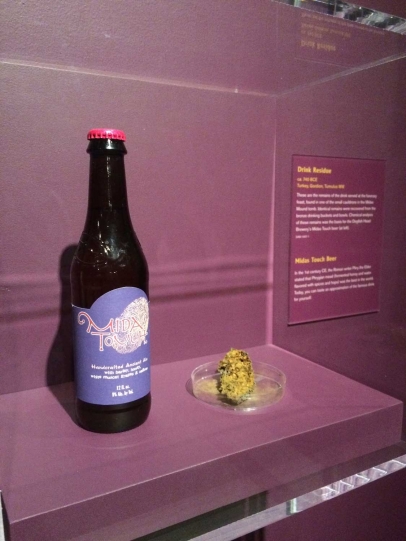Reviving Ancient Ales
Imagine scraping the residue from the base of a thousand-year-old keg, analyzing the compounds, and then teaming up with a brewery to recreate the libation that may well have fueled the building of the pyramids. Did archeology just get a little more interesting?
Dr. Patrick McGovern thinks so. He’s the Scientific Director of the Biomolecular Archaeology Project for Cuisine, Fermented Beverages, and Health at the University of Pennsylvania. As a world expert in ancient fermented beverages, he’s identified early libations from Turkey to Scandinavia to Honduras. He’s responsible for tracking down the oldest known booze, which dates back 9,000 years to China’s Yellow River Valley. The 70-year-old scientist and professor has been called the “Indiana Jones of Ancient Ales, Wines, and Extreme Beverages.”
McGovern does the drinking vessel scouring and the tedious lab analysis and leaves the brewing up to Dogfish Head founder, Sam Calagione. The two presented four of their ancient ales at the Penn Museum during Craft Beer Week.
The white-haired, smartly dressed scientist and the brewer in a trucker hat, cuffed khakis, and sneakers are old friends, brought together by a quest to give life to lost flavors. “Sam and I have been working on these ancient ales for 16 years,” McGovern says. Their collaboration began in the very room in which more than 160 guests assembled for the tasting event last week.
In 2000, the Penn Museum hosted a dinner to honor world beer authority Michael Jackson. After the meal, McGovern announced a challenge to the assembled brewers: to replicate the beverage drunk at the funerary feast of King Midas 2,700 years ago. He’d analyzed the residue from bronze pots and ram-headed buckets in Midas’s tomb and came up with an intriguing list of trace substances including tartaric acid (indicative of grapes), calcium oxalate (indicative of barley beer), and beeswax.
Who could recreate this ancient wine/beer/mead mash-up and produce a golden beverage worthy of King Midas?
Of the many samples left on McGovern’s doorstep, Calagione’s was the most promising. The two worked together to develop Midas Touch, Dogfish Head’s most heavily awarded beer to date. It’s a shimmering elixir made with honey, barely malt, Muscat grapes, and saffron (the bittering agent – hops weren’t around in 700 B.C. Turkey). The sweet and malty beer does indeed go down like a royal treat.
“It sort of captured people’s imagination,” Calagione says. Though the first batch was wildly expensive to produce (Saffron costs hundreds of dollars per ounce), word got out and, by popular request, Dogfish Head put Midas Touch in full production. “It’s now the number one selling fermented honey beverage in America,” Calagione says.
Samplers tasted three additional collaborative Ancient Ales. Chateau Jiahu, inspired by a Chinese booze brewed 9,000 years ago made with orange blossom honey, and hawthorne fruit; Scandinavian Kvasir made with wheat, cranberries, honey and birch syrup; and Theobroma, reminiscent of the chocolate chili beverage for the elite in Honduras 3,400 years ago.
These last three beers are produced in limited quantities and can be tricky to find, but Midas Touch is available at bars and bottle shops all over Philly (see locator). And if you’re fascinated by the collection, the brewery’s just a 2-hour road trip away in Milton, DE. Coming soon: Colonial Ale made with an ancient local yeast and cider apples.
Note: The Penn Museum held the tasting in conjunction with their special exhibition, The Golden Age of King Midas. You can view the drinking vessels used at the funerary feast, see the oldest stone mosaic, and learn about Gordion, the capital of the Phygians. It’s a world-exclusive exhibit that runs through November.






